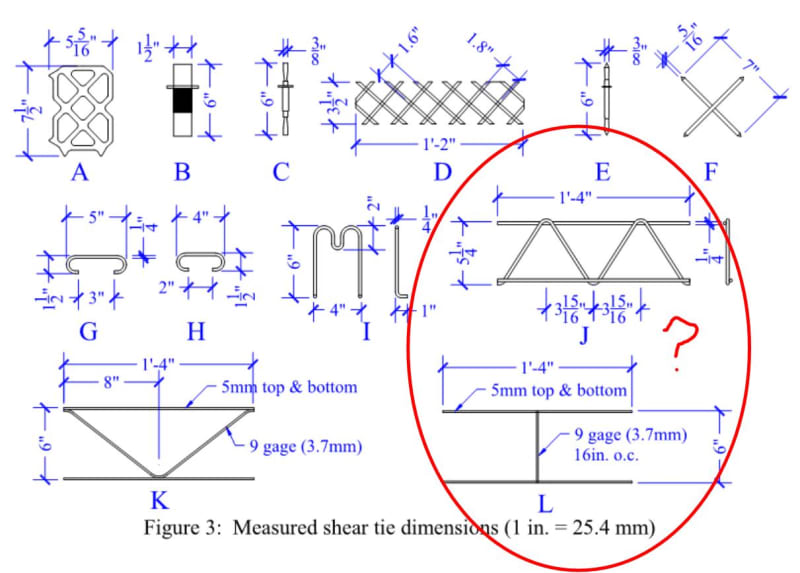JohnRwals
Structural
- Jul 8, 2020
- 151
Hello!
Shear ties are used for composite action in tilt-up and precast concrete sandwich walls.
Dr. Naito's paper shows many shear ties in the market.
Two of them are actually masonry joint reinforcement, truss mesh and ladder mesh.
Are these meshes really used as a shear tie?
Is there any paper/info referring to the market share of respective shear ties?
Thanks for your interest!
JRW

Shear ties are used for composite action in tilt-up and precast concrete sandwich walls.
Dr. Naito's paper shows many shear ties in the market.
Two of them are actually masonry joint reinforcement, truss mesh and ladder mesh.
Are these meshes really used as a shear tie?
Is there any paper/info referring to the market share of respective shear ties?
Thanks for your interest!
JRW


